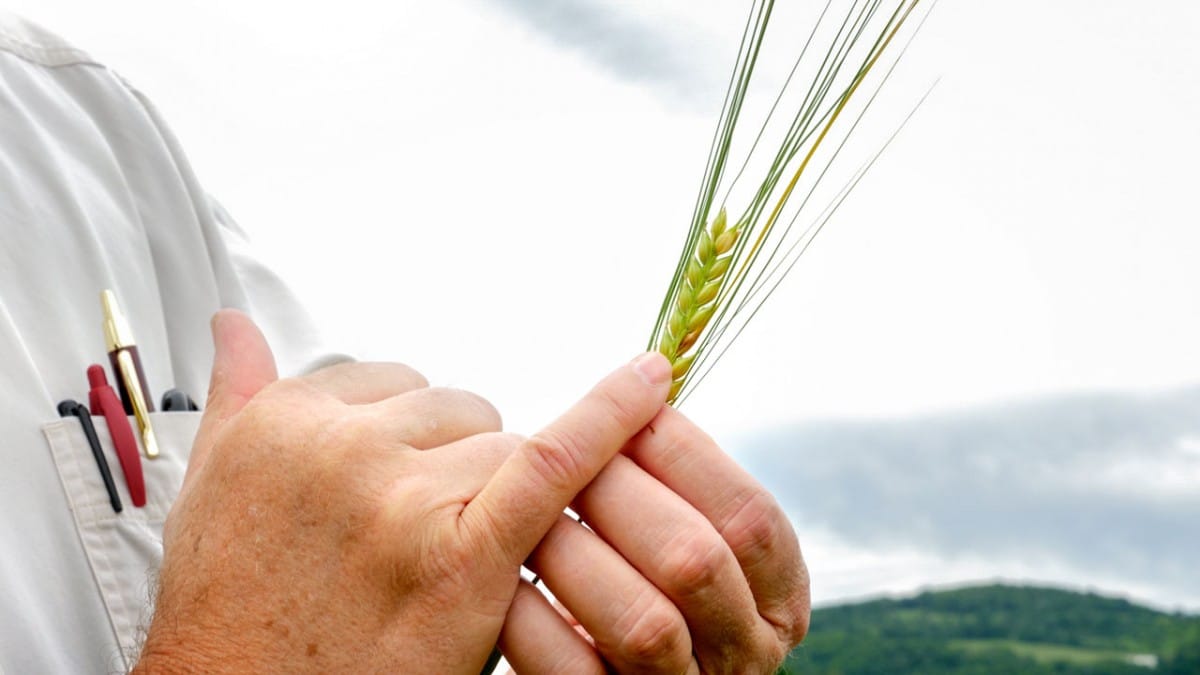The first variety of spring malting barley bred by Cornell to succeed in New York’s wet climate and support the state’s $5.4 billion craft beer industry just got a new name: Excelsior Gold.
Formerly called CU-31, the barley got its name as a result of a contest co-hosted this fall by the College of Agriculture and Life Sciences (CALS) and the New York State Department of Agriculture and Markets.
Richard Ball, commissioner of Ag and Markets, announced Excelsior Gold to more than 100 attendees from across the craft beverage supply chain at this year’s virtual Empire State Barley and Malt Summit, Dec. 16.
“New York is home to the second-highest number of breweries of any state in the U.S. That’s 472 breweries, a 350% increase since 2012,” Ball says. “It’s important to recognize that beyond the infusion of dollars into the local communities, these industries are also generating increased employment and economic development for value-added industries across the supply chain, such as bottling plants, construction, transportation, printing and marketing.”
Showcasing keynote speakers Bart Watson, chief economist for the Brewers Association, and Jason Perkins, brewmaster at Allagash Brewing Company of Portland, Maine, the event sought to define what success looks like for a thriving craft brewing industry based on locally grown grains.
“We have been so successful because of our strong partnerships with Cornell CALS, whose critical research has helped fuel the growth of the industry, the brewing community and, of course, our farmers,” Ball says.
Selected from among 190 submissions, Excelsior Gold was put forward by Arlene Wilson, executive director of Cornell Cooperative Extension (CCE) in Yates County. She drew inspiration from two sources:
- New York state’s motto, “Excelsior” (Latin for ‘ever upward’), because it symbolizes progress and excellence in New York endeavors; and
- Gold, for its association with value and intrinsic beauty.
“Naming is important, in that it sets an expectation and a standard,” Wilson says. “We put a great deal of thought into naming our children; we want to bless them and set them on a positive course. This encouraged me to think about what would do the same for a newly ‘birthed’ product that could set a positive direction for New York craft beverage markets as well as the northeastern U.S. supply chain.”
Released in March by plant scientists at CALS, the grain is critical to the success of New York state craft brewers striving to meet standards set by the 2012 Farm Brewing Law, which requires brewers to steadily increase the amount of state-sourced ingredients used in their beer. Currently, the requirement is 60% of all ingredients; on Jan. 1, 2024, that will increase to 90%.
“This variety will support craft brewers in New York by helping to stabilize production of good quality malting barley that thrives in the challenging growing conditions in the northeastern U.S.,” says Mark Sorrells, professor of plant breeding and genetics, who led development of the grain.
Excelsior Gold, which is resistant to local fungal pathogens and preharvest sprouting in the state’s wet climate, is being commercially grown for seed and will be available to New York brewers by fall 2021.
Jason Sahler, founder of Strong Rope Brewery in Brooklyn, New York, is looking forward to getting ahold of Excelsior Gold. Well-connected to the state’s brewing community, Sahler hopes to initially use the grain in a single-malt, single-hop blonde ale, to see how it performs without too many other variables.
“It’s an exciting new ingredient for us to play with and tell a new story about,” Sahler says. “If this grain does what we all think and hope it will do, we’ll see dramatic positive effects up and down the supply chain. It’ll take time to see the full impact and give it good analysis, but everyone, from growers, to malters, to brewers, to consumers — we’re all excited about this new barley.”
Source: Cornell













